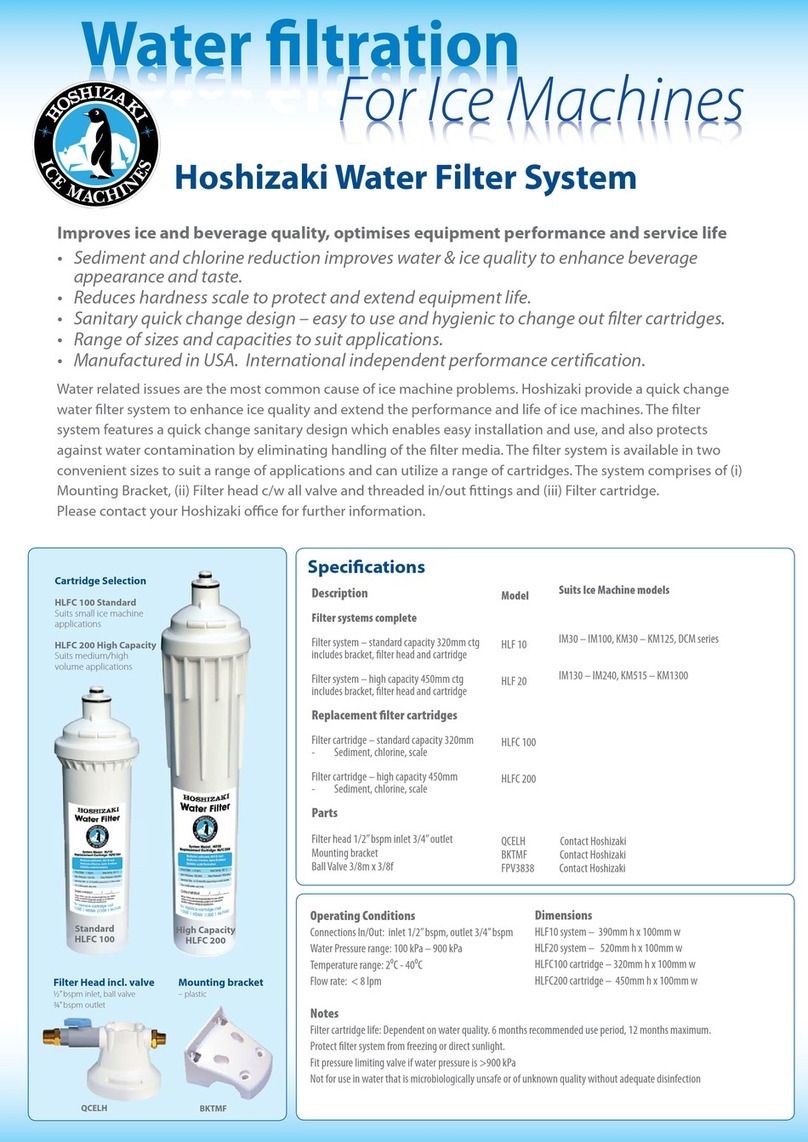
2
IMPORTANT
This manual should be read carefully before the product is installed and
operated. Only qualified service technicians should install, service, and
maintain the product. Read the warnings contained in this booklet carefully as
they give important information regarding safety. Please retain this booklet for
any further reference that may be necessary.
CONTENTS PAGE
Important Safety Information-------------------------------------------------------------------------3
1. CHECKS BEFORE INSTALLATION------------------------------------------------------------4
2. LOCATION --------------------------------------------------------------------------------------------4
3. ELECTRICAL CONNECTION--------------------------------------------------------------------5
4. INSTALLATION OF WATER SOFTENER (SOLD SEPARATELY) AND
WATER FILTER (SOLD SEPARATELY) -------------------------------------------------------7
[a] CHECKS BEFORE INSTALLATION--------------------------------------------------------7
[b] LOCATION----------------------------------------------------------------------------------------7
[c] SET UP --------------------------------------------------------------------------------------------7
[d] ELECTRICAL CONNECTION----------------------------------------------------------------7
[e] WATER SUPPLYAND PLUMBING CONNECTIONS----------------------------------8
5. INSTALLATION OF REMOTE CONTROLLER (ACCESSORY)-------------------------8
[a] CHECKS BEFORE INSTALLATION--------------------------------------------------------8
[b] LOCATION----------------------------------------------------------------------------------------9
[c] SET UP --------------------------------------------------------------------------------------------9
[d] ELECTRICAL CONNECTION-------------------------------------------------------------- 11
6. INSTALLATION OF WATER TANK FLOAT SWITCHES (OPTION) AND
WATER TANK (SOLD SEPARATELY)-------------------------------------------------------- 11
[a] CHECKS BEFORE INSTALLATION------------------------------------------------------12
[b] LOCATION--------------------------------------------------------------------------------------12
[c] SET UP ------------------------------------------------------------------------------------------13
[d] ELECTRICAL CONNECTION--------------------------------------------------------------14
7. INSTALLATION OF OUTLET VALVES (OPTION)-----------------------------------------14
[a] CHECKS BEFORE INSTALLATION------------------------------------------------------15
[b] LOCATION--------------------------------------------------------------------------------------15
[c] SET UP ------------------------------------------------------------------------------------------15
8. WATER SUPPLYAND PLUMBING CONNECTIONS------------------------------------16
[a] UNIT WITH REMOTE CONTROLLER, WATER SOFTENER &
WATER FILTER--------------------------------------------------------------------------------16
[b] UNIT WITH WATER TANK, WATER SOFTENER & WATER FILTER-----------19
9. ADJUSTMENT -------------------------------------------------------------------------------------23
[a] OPERATION MODE--------------------------------------------------------------------------23
[b] CURRENT, VOLTAGE, PORTION CONTROL DISPENSING TIME,
HANDWASHING TIME ----------------------------------------------------------------------24
10. FINAL CHECK LIST-------------------------------------------------------------------------------26































